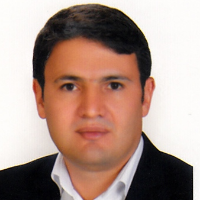Investigating the Irrigation Hydromodul Changes in Different Climatic Conditions and Cultivation Patterns
Most of the water consumed in Iran is allocated to the agricultural sector. The world's population will reach about 9 billion by 2050. The population of our country will exceed 86 million in 1404, in which population growth is faster than many other countries. For the exponential and rapid growth of population of the world and Iran, a great challenge will be created in food production with limited water and land resources. Due to population growth and urbanization, water resources in the world are becoming more and more limited. Therefore, paying attention to the amount of water consumed by plants and agricultural cultivation pattern, to maximize the yield of farms, is one of particular importance. Determining the capacity of canals or water pipes depends on the irrigation hydromodule and this parameter must be carefully extracted for each area. On the one hand, if the irrigation hydromodule of an area is estimated to be less than the actual value, water requirement of the plants, will not be met and the agriculture will suffer a lot from this issue. On the other hand, if the irrigation hydromodule of an area is estimated to be higher than the actual value, farmers will not save water and therefore the efficiency of irrigation systems will decrease. Therefore, it is required that for each area, the cultivation pattern and irrigation hydromodule should be carefully estimated and the combined hydromodule should be extracted and be the basis for designing irrigation projects.
In this research, according to meteorological data, the rate of evapotranspiration and finally the irrigation hydromodule for some stations in the country is determined. Climatic data of Ardabil, Ahvaz, Qazvin, Kerman and Mashhad stations were collected and the evapotranspiration values of grass, as reference plant, were extracted using Cropwat8 software. The climatic data period in different stations was chosen so that the beginning of the period, as far as possible from the establishment of each station (in the absence of incomplete or missing data) and the end of the period ending in 2015. The length of the period in different stations varies depending on the year of establishment and it was tried to consider the maximum length of the period for each station. The cultivation pattern of the desired areas was extracted from the sources. The changes trend in climatic parameters, rainfall and evapotranspiration of the reference plant of each region were determined. Hydromodules, probability of occurrence, return period and Weibull conversion were extracted for each hydromodule (one per year). Firstly, obtained irrigation hydromodules from the Cropwat8 software for all the years were sorted in ascending order and each one was given a number (m). Then the probability percentage (P%) was calculated for each of the hydromodules. The return period (RP) was calculated for the various probabilities. Finally, using the Weibull conversion coefficient, irrigation hydromodules with different return periods were extracted for each region.
The results showed that the average evapotranspiration of the grass, as reference plant, for Ardabil, Ahvaz, Qazvin, Kerman and Mashhad stations were calculated 2.87, 5.75, 3.79, 5.4 and 2.49 mm d-1, respectively. The average irrigation hydromodules for the five mentioned stations were 0.66, 0.99, 0.75, 1.1 and 0.71 lit s-1 ha-1, respectively. Using the linear variation function, in return periods of 2 to 200 years, the irrigation hydromodule values in Ardabil, Ahvaz, Qazvin, Kerman and Mashhad stations varies from 0.673 to 0.768, 1.023 to 1.22, 0.76 to 0.861, 1.095 to 1.248 and 0.7 to 0.759 lit s-1 ha-1, respectively. Using the exponential variation function, in the return periods of 2 to 200 years, the irrigation hydromodule values in Ardabil, Ahvaz, Qazvin, Kerman and Mashhad stations varies from 0.665 to 0.775, 1 to 1.249, 0.754 to 0.867, 1.086 to 1.255 and 0.695 to 0.761 lit s-1 ha-1, respectively. Taking the linear change function, by changing the return period from 2 to 200 years and reducing the probability of occurrence, the amount of irrigation hydromodule in Ardabil, Ahvaz, Qazvin, Kerman and Mashhad stations were increased 0.148, 0.303, 0.156, 0.237 and 0.092 lit s-1 ha-1, respectively that is equivalent to 19.27, 24.84, 18.11, 19 and 12.12 percent, respectively. Also, considering the exponential change function, the amount of irrigation hydromodule in the mentioned stations were increased 0.173, 0.391, 0.177, 0.267 and 0.55 lit s-1 ha-1, respectively that is equivalent to 22.32, 39.1, 23.47, 21.27 and 13.98 percent of the average. In short return periods (including 2, 5 and in some stations 10 years), the linear function estimates the amount of irrigation hydromodule more than the exponential function. At higher return periods (including 25, 50, 100, and 200 years), the exponential function estimates the amount of irrigation hydromodule more than the linear function. In the intermediate return periods (including 10 and 25) the results of the linear and exponential functions are very close to each other.
The lowest amount of hydromodule was obtained in Ardabil station for a return period of 2 years and the highest amount was obtained for Ahvaz station for a return period of 200 years. Taking the linear changes function and considering that with increase in return period (even up to 200 years), the irrigation hydromodule does not change much (about 20% of the average), it is suggested that the construction of water storage, transmission and distribution buildings should be designed and implemented with low probability of occurrence (high return period).
- حق عضویت دریافتی صرف حمایت از نشریات عضو و نگهداری، تکمیل و توسعه مگیران میشود.
- پرداخت حق اشتراک و دانلود مقالات اجازه بازنشر آن در سایر رسانههای چاپی و دیجیتال را به کاربر نمیدهد.



